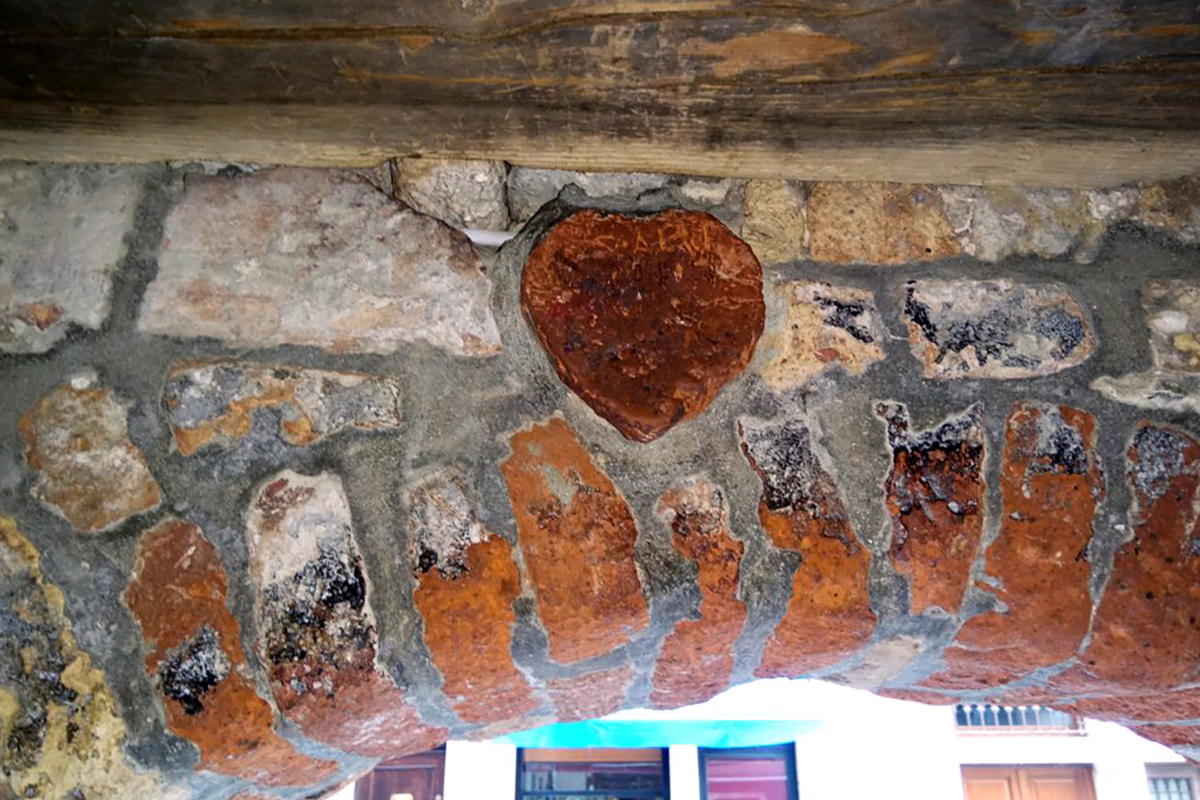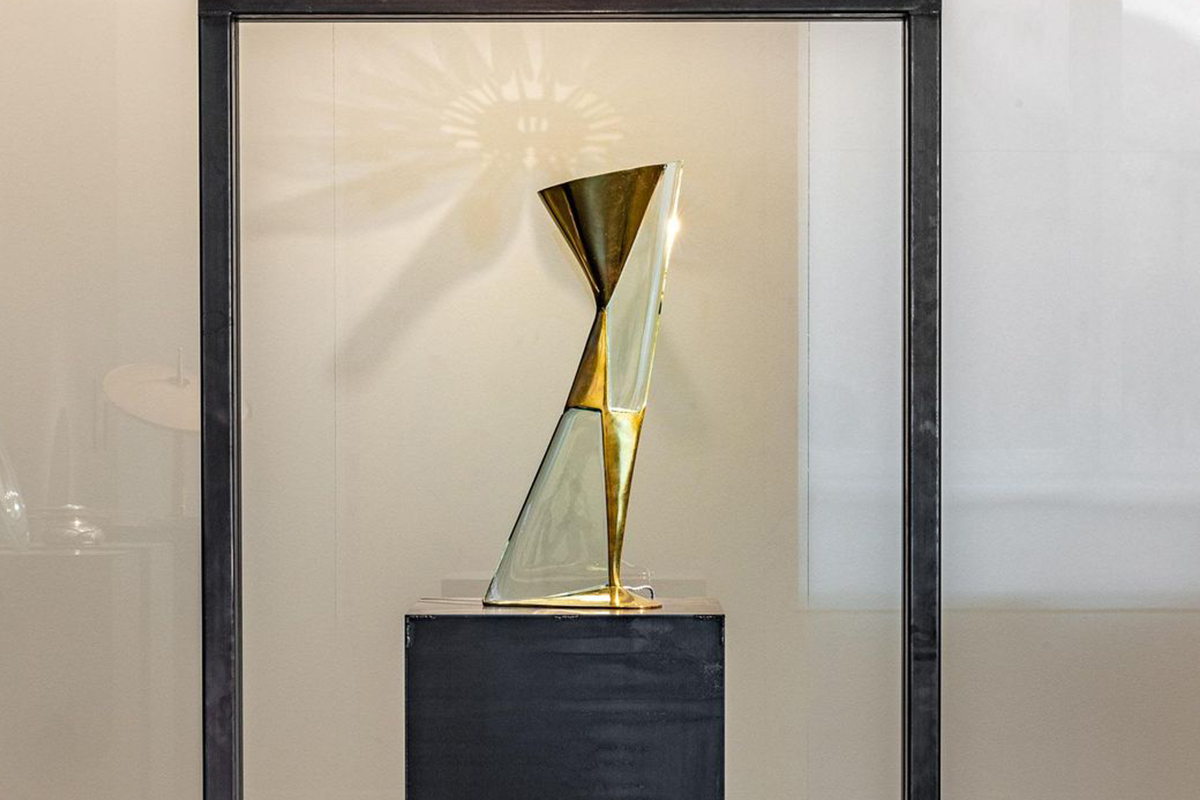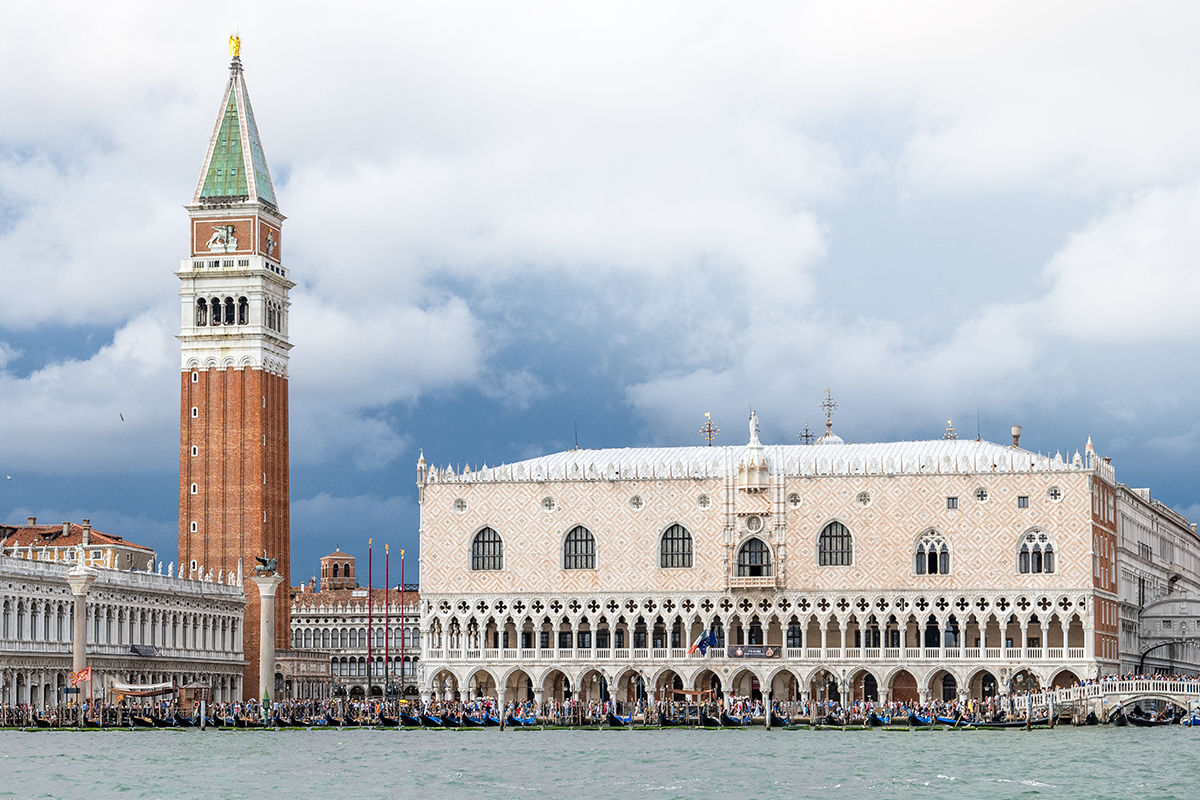
The Doge’s Palace and the Column of Grace
by Martina B. Priviero
Venice is ancient and enjoys a millennia-old, pure, and “Serenissima” (serene) life. However, behind this evident history lies an intricate web of legends and mysteries: it is the hidden Venice. Thus, the city conceals its secrets even in the facades and in the most exposed palace on the island, the Doge’s Palace. By walking around, one inadvertently overlooks the asymmetry of a column, misaligned with the others, which the distracted gaze fails to notice amidst the beauty of the square.
The Doge’s Palace, the ancient seat of the Doge and the Venetian magistracies, with its Byzantine architecture, is made unique by the aesthetic antinomy created between the massive bulk of the central structure and the columns supporting it, which appear slender and delicate. Similarly, the monolithic jurisdiction of the Serenissima, with its grave and statuesque magistracies, assumes to lighten and soften itself with a clause that directly involves the same colonnade. Analogous to its architecture, the legislation creates a margin of tenderness, albeit deceptive: it is the “Column of Grace.” The fourth column, starting from the corner of the little square, slightly larger than the others, is the column of the final chance. It is said that in the times of the Serenissima, the condemned to death saw a glimmer of hope for freedom here: by leaning against the column and walking along the circumference, from the outside of the colonnade, one could not help but fall from the step that separates it from the shore. Those who succeeded, were instantly released without any possibility of appeal. It seems simple, but no one ever managed to do it.
That step, now worn out by countless attempts, still holds something intriguing: it is the thrill of a hope that is only a few centimetres thick. It is the cynical crack of a city that tolerates neither offenders nor political dissidents. It is the sadistic smirk of an uneven challenge—Venice has no rivals.
Travel Journal

Biblioteca Marciana
The Marciana Library is one of the largest and oldest libraries in Italy, and the most important in Venice. Established during the height of the Renaissance, it contributed, with its collection, to making the island one of the major centres of classical studies. It contains over a million books, including printed volumes, classical manuscripts, maps, and incunabula. A true gem.
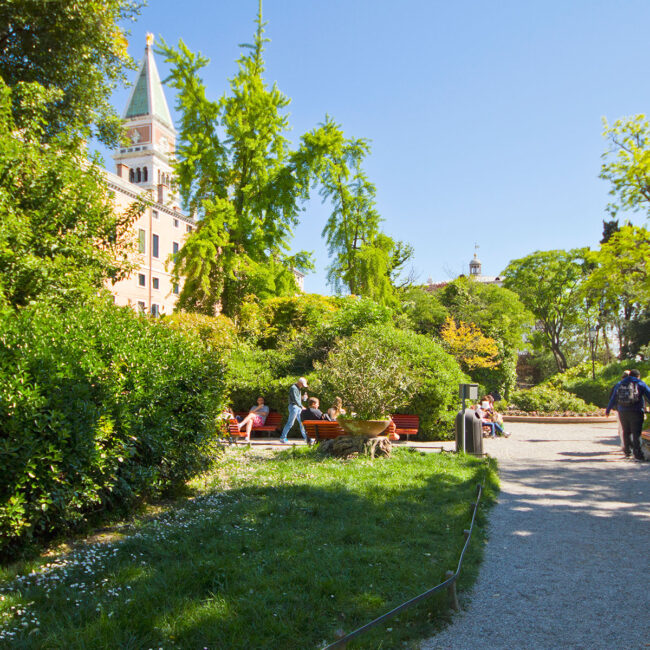
Giardini Reali
The Royal Gardens, commissioned by Napoleon and inaugurated in the early 19th century, are now a green area overlooking the San Marco Basin, covering the space in front of the Marciana Library. After falling into disuse over time, they have recently been carefully restored and, for a few years now, have been open and accessible to the public.
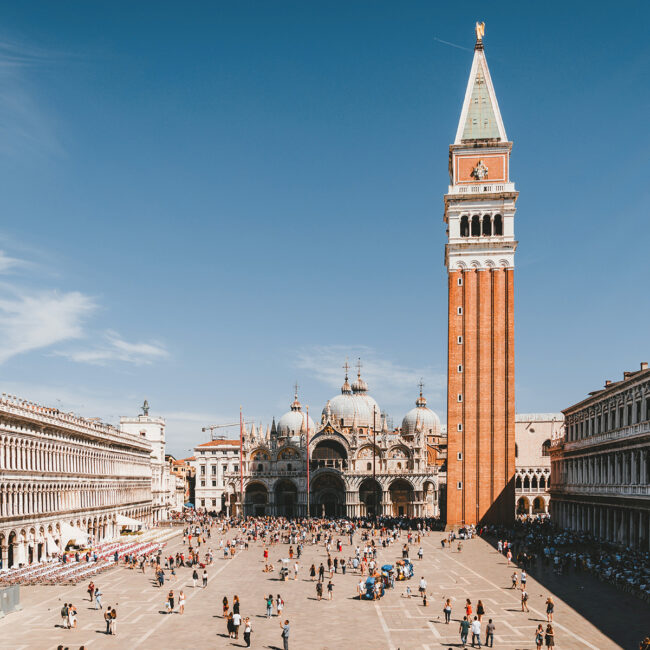
Piazza San Marco
St. Mark’s Square, with its trapezoidal shape, is the only square in Venice and one of the most famous in the world. Facing the square is the monumental complex of St. Mark’s Basilica and the renowned literary Café Florian, a meeting place for the most illustrious figures in the art world. Indeed, the square itself is known as the “Drawing Room of Europe.”
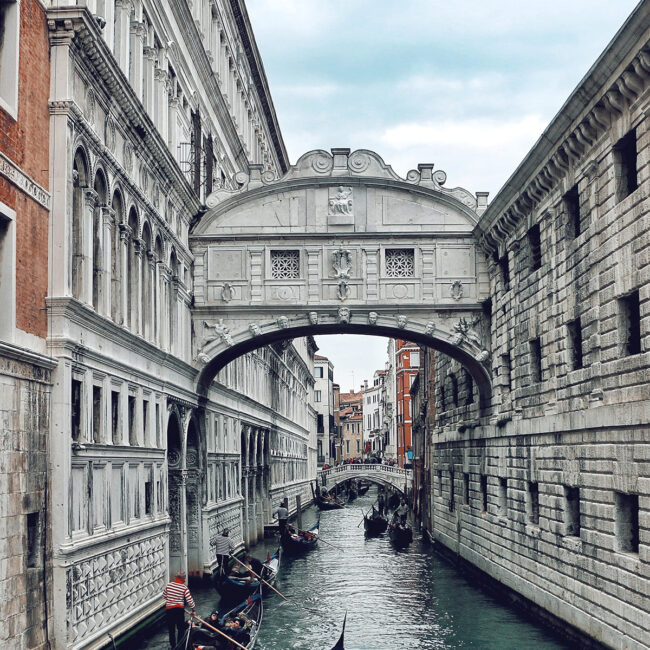
Ponte dei Sospiri
Built in the 17th century in the typical Baroque style, the extensively photographed Bridge of Sighs was designed to connect the Doge’s Palace to the New Prisons. According to tradition, the name refers to the sighs drawn by the prisoners as they crossed the bridge. From the small window, they could see the outside world for the last time before being led into the prisons.
Published by: Editor on 24/05/2023



